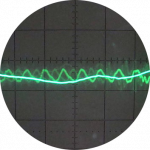PAS_63100_2024 - BSI guidance on BESS (battery energy storage systems) in dwellings
Guidance document PAS_61300_2024 has just been published by BSI and the DESNZ, effective 31/03/24. It contains some good content, and for those considering low voltage DC BESS as part of a solar PV, or BESS with inverter but without solar PV for on or off-grid use, is a must read.
Some standard highlights:
* Over-current protection of storage batteries. On each individual battery. Overcurrent protection at the end of a string of batteries wired in parallel is not compliant
* Where practical, BESS should be installed outdoors
* Any indoor location of BESS shall be protected with a mains wired fire/smoke detector to BS 5839-6
* BESS should not be installed indoors in rooms in which persons are intended to sleep. Routes used as a means of escape that are not defined as protected escape routes including; landings, staircases and corridors. Corridors, shafts, stairs or lobbies of protected escape routes. Firefighting lobbies, shafts or staircases, Storage cupboards, enclosures or spaces opening into rooms in which persons are intended
to sleep. Voids, roof spaces or lofts. Within 2 m of stored flammable materials and fuel storage tanks or cylinders. Cellars or basements that have no access to the outside of the building.
* Indoor location of BESS shall have fresh air ventilation openings to outdoors (yes, really!)
* The total stored energy of all units in an individual dwelling house shall not exceed: 80 kWh where batteries are installed in either detached garage, outbuildings or outdoors; or attached garage or outbuilding that has a fire separation with a performance of at least REI 60 to BS EN 13501 series, or 40 kWh in all other cases (i.e.: indoor storage)
* Internal garage or external driveway locations for BESS require protection against mechanical impact if a vehicle could accidentally hit the BESS system
* Updates and new guidance to the requirements for electrical system marking and labelling at the incoming meter point and the consumer unit (additional to BS 7671)
* The installer is required to provide initial verification of conformity to PAS_61300_2024
This standard is likely to have implications for the costs of solar PV installation including BESS. To what extent the industry adopts this standard, and complies to it, remains to be seen. If you are considering BESS, be mindful of it and ask your installer whether they will comply. If you already have BESS, how compliant are you? If you are doing it yourself, how compliant are you? There's no retrospective requirement of course, but if this standard gets widely adopted as an accompanying standard to BS 7671, it is likely to creep into conveyancing questionnaires and paperwork when selling a property containing BESS and/or building insurer/underwriter questionnaires when insuring a property containing BESS.
The standard can be downloaded for free here: https://knowledge.bsigroup.com/products/electrical-installations-protection-against-fire-of-battery-energy-storage-systems-for-use-in-dwellings-specification?version=standard&utm_source=social&utm_medium=LinkedIn&pi_content=3cf73fe0773aae995725bc7506a53e6eb1f4544455be02d3365c6eae4210c3f3
@guthrie - don't worry. PAS_63100_2024 is not a retrospective standard. Probably the large majority of current BESS installations will not comply, including mine. I don't have a mains wired smoke alarm, though I do have a battery powered alarm fitted. I don't have external ventilation to the cupboard the BESS is installed in either.
As the number of domestic solar PV battery installs increases, the industry is looking to raise standards. There are some installs where the location of BESS has clearly been chosen for the convenience of the installer, and without occupant safety consideration in mind. If this standards prompts installers to think again that's a good thing.
Most solar PV faults happen with the external solar PV array and in particular the MC4 electrical connections. DC power is prone to arcing much more than AC power, and faulty MC4 connections can cause a fire. For that reason I would always advocate on roof solar PV rather than in-roof. Stone, cement and tiled roof materials provide good fire resistance to the house, but only some of the in-roof tray mounted systems do. For in-roof systems, the MC4 connections should be housed in fire-proof enclosures.
Incidences of domestic Li-Ion fires are increasing, but these are overwhelmingly from portable batteries in e-bikes, scooters, hoverboards, Li-ion powered toys, portable power-packs and batteries, etc. Many of these items are internet purchased, made in the far east, and don't confirm to EU CE or UK CE standards.
Solar PV BESS is much better regulated already in terms of the safety of the products on the market, but some of the installation locations are questionable and could be improved upon. Fires caused by faulty BESS from reputable solar PV manufacturers are extremely rare. But as the number of installations rapidly increases, such incidents will also increase. I would be much more concerned about DIY BESS installations from a safety point of view.
Solar PV Installers are put in a dilemma at present: Installer A may stand to lose a sale by saying "I shouldn't install BESS in that location" where installer B says "I'll do it". That's why homeowners should be aware of this standard, as some installers might decide to keep quiet about, at least it in the short-term.
Posted by: @allyfishis a must read
:-/ It is a shame that the open standard references other standards which are closed. I don't think I can justify spending > £400 for the bed-time reading.
Posted by: @allyfishIndoor location of BESS shall have fresh air ventilation openings to outdoors
I suppose this comes from traction batteries which off-gas hydrogen. It is an interesting requirement, particularly the interaction with building regs. These seem to combine (along with fire alarm installation requirements) to push the battery installation out of the dwelling and into the garage or else outdoors, which is unfortunate for homes without a garage or outdoor space.
I feel @transparent may have something to say about the lumping of LiFePO4 batteries into the lithium-ion chemistry (by omission).
Posted by: @allyfishMost solar PV faults happen with the external solar PV array and in particular the MC4 electrical connections.
I an eFixx video about solar string isolation which attributed about 49% of fire incidents to DC isolators. See
page 20. I think older solar isolators had a polarity.
Posted by: @chickenbigI suppose this comes from traction batteries which off-gas hydrogen
I think you are right, it borrows requirements of IEC 62485 'secondary batteries' - where for older battery chemistry types, Lead acid and NiCd, there are formulae in the relevant parts of the standard for calculations ventilation rates and minimum opening area for naturally ventilated battery enclosures.
But for generic Li-Ion batteries, which part 5 of IEC 62485 refers, there is no mandatory requirement for ventilation. So why it is included in PAS_63100_2024 isn't clear. I suppose having a means of ventilating smoke, toxic and potentially combustible gasses during or after a battery malfunction might be desirable, but in a domestic situation you would 'get out and stay out'.
Ventilation may prevent the enclosure housing the batteries from getting too warm. BESS systems have quite advanced battery management systems, and thermal sensors - battery charge and/or discharge rates are often regulated above a certain temperature limit. Which is why putting BESS in a loft where the insulation is above the ceiling and the roof structure is non-insulated isn't a good idea.
Posted by: @allyfishPAS_63100_2024 is not a retrospective standard.
In theory that might be the case.
But once the house insurers add it to their list of questions, we are likely to find compliance with PAS-63100-2024 becomes mandatory.
Posted by: @chickenbigI feel @transparent may have something to say about the lumping of LiFePO4 batteries into the lithium-ion chemistry (by omission).
I certainly agree that the 6 main chemistries of Lithium batteries need to be addressed separately.
And I don't like the idea of placing LiFePO4 batteries outside, where temperatures can drop below zero (Celsius).
Most BMS units will prevent charging at that temperature.
Some might have an auxiliary-port which can be used to turn on a heater within the cabinet... which means we lower the overall storage efficiency of course.
I really need to scrutinise the text of the Standard itself before passing further comment.
Fortuitously I found a link which allowed me to register for an account with the BSI Group who offered a copy at no cost.
Having done so, I then found that I needed a copy of Adobe Acrobat and their FileOpen plug-in.
... which is no good to me because I don't use computers running any of the OS versions which they support. 😖
Save energy... recycle electrons!
- 26 Forums
- 2,342 Topics
- 53 K Posts
- 350 Online
- 6,000 Members
Join Us!
Worth Watching
Latest Posts
-

RE: What a Bad Heat Pump Installation Looks Like
@editor The trick to an inside unit installation is to ...
By MikeFl , 38 minutes ago
-
RE: Has Anyone Else Noticed a Decline in Tradesmanship?
I don't really know how to respond. My view is that it...
By JamesPa , 2 hours ago
-
RE: Different dT on each radiator?
The way heating systems are designed will result in rou...
By JamesPa , 3 hours ago
-
RE: Heat Pump Performance Analysis Web App using Modbus Data
I have created a beginners guide to provide a walkthrou...
By redzer_irl , 7 hours ago
-

RE: Setback savings - fact or fiction?
PS by visually merging the two tables as above, I ended...
By cathodeRay , 12 hours ago
-
RE: Samsung ASHP scheduling help
Correction to the post above (my time to edit has run o...
By redzer_irl , 13 hours ago
-

RE: Homely for Daikin Altherma 3 - Petersfield Area
@russ If you would care to pose your questions on one o...
By Toodles , 15 hours ago
-

RE: A Smarter Smart Controller from Homely?
@papahuhu I have a feeling that my Homely smart control...
By Toodles , 15 hours ago
-

RE: The good, the bad and the not that great – my heat pump installation
@cathoderay the guy I spoke to on the phone seemed very...
By Burtis , 1 day ago
-
RE: Configuration issues with 10kW Midea R32 heat pump
Sorry that was a screenshot of @curlyKatie - mine has...
By SteveT , 1 day ago
-
RE: British Gas vs Octopus Energy vs Heat Geek vs EDF vs Aira vs OVO vs EON.Next vs Boxt
I get the impression that that comment "they don't comm...
By JamesPa , 1 day ago
-

@majordennisbloodnok Just in case there are variations ...
By Toodles , 1 day ago
-

RE: Latest NIBE model has known defect and no solution
@kings I’m glad I could help. NIBE are taking this very...
By Mars , 1 day ago
-
RE: Octopus Cosy Heat Pump Owners & Discussion Thread
@jamespa yes, I'm under no illusions but in some respec...
By AndrewJ , 1 day ago
-
RE: Poll for Time of Use, tariffs, technology
@majordennisbloodnok thanks. Unfortunately i can't upd...
By Tim441 , 2 days ago
-
RE: Electricity price predictions
It seems the end of cfd payments is in sight, even if a...
By Batpred , 2 days ago
-
-
@pie_eater Yes, I installed Homely to a Daikin heat pum...
By gery , 2 days ago
-
RE: Havenwise App Help & Forum Support – Get the Most from Your Heat Pump
@davidalgarve Potentially stupid question, but are you ...
By Sheriff Fatman , 2 days ago





